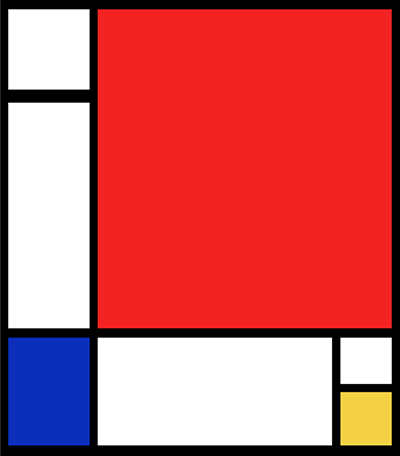 Buy Art Prints Now
Buy Art Prints Nowfrom Amazon
* As an Amazon Associate, and partner with Google Adsense and Ezoic, I earn from qualifying purchases.
Mondrian's abstract style consisted of primary colours and clear shapes, making his painting a perfect fit for a modern home
Piet Mondrian began as a traditional painter producing trees depicted within the Dutch landscape. Later, he adopted a style called 'Neoplasticism' that led to the birth of Sans Titre.
The Journey Leading up to Sans Titre
1. The Cubist Period in Paris
Initially, Piet Mondrian concentrated on a cubist style, painting calm Dutch landscapes. At the time, Piet was fascinated by the works of Van Gogh, a fact that culminated to the painting Red Tree (1908). This is evident due to the presence of repetitive brushwork (vibrating), the use of bright colours and incorporating a tree into the landscape.
2. The Birth of Neoplasticism
Piet Mondrian used simple yet greatly impacting minimal black lines together with balanced blocks of colour. This style became his signature up to the end of his career. He referred to the style as 'Neoplasticism,' which was based on pure colours and straight lines underlying the visible world.
Mondrian moved through seminaturalism to adopt neoplasticity; as a result, he reduced his palette to straight lines, primary colours and flat with angles similar to the canvas surface.
Description of Sans Titre
Sans Titre is one of his paintings. It has a bold red area which occupies the largest space; other parts consist of yellow and blue colours which make up the focal points. The rest of the work consists of white and black.
The basic ingredient of Mondrian's work was secondary and primary colours; later, he embraced similar shades of the colours throughout his abstract work.
Neoplasticism has had a huge impact in the modern society, far more than the paintings of his peers, say, Picasso and Braque; something that can be attributed to Mondrian's love for detailed work.



